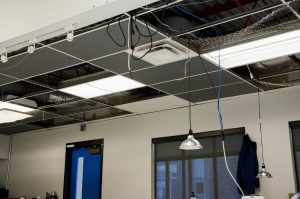More than 40 per cent of Quebec’s university buildings are in poor or very poor condition, according to a recent Quebec government report obtained by Radio-Canada.
One of the key challenges for campus building maintenance at Quebec universities is the province’s age, especially for some universities in Montreal which date back to the 1800s. McGill University, founded in 1821, received the worst score for Quebec. More than 70 per cent of its buildings are in poor or very poor shape, according to CBC.
“Infrastructure in Quebec in general is in bad shape. McGill University specifically has many heritage buildings with copper roofs and solid masonry walls,” said McGill spokesperson Vincent Allaire. “These are more expensive to maintain.”
Renovating older heritage buildings drives costs up by at least 20 per cent, Allaire said, in order to maintain the buildings’ original qualities.

Ontario isn’t doing much better—50 per cent of its university buildings are in poor condition, according to the latest Council of Ontario Universities (COU) report published in 2015.
The report found 68 per cent of Carleton University’s 37 buildings were in poor condition.
Concordia University is another Montreal university with more than 60 per cent of its buildings requiring urgent repairs. Despite this number, Concordia spokesperson Christine Mota said the campus is “pretty much state of the art.”
Mota said renovations are a problem that plague all older universities.
“It’s an ongoing challenge,” she said. “We still do have some old annexes downtown and some older buildings on our west end campus that do require regular maintenance.”
But the numbers in the Quebec report might be misleading, she said, since Concordia also has several new buildings that don’t need any repairs, including two new high-rise buildings downtown.
“If you have two brownstones that need a new roof, and you’ve got two massive 50-storey towers that are brand-spanking new, you can’t compare the two,” Mota said.
Darryl Boyce, Carleton’s vice-president (facilities management and planning), said he sees the “building boom” phenomenon on university campuses a little differently.
Boyce is part of the task force for the COU, which reviews the state of Ontario’s buildings on an annual to bi-annual basis. He said including new buildings in the reviews skews the figures.

For the past eight years, the average grades given to Ontario university buildings based on their need for renovations has been stable, Boyce said.
“The problem is that it’s stable because when you bring a new building on, it becomes part of your portfolio,” he said. These new buildings drive the scores up while other campus buildings remain in need of urgent repairs.
“The actual dollar need has grown,” Boyce said.
The Ontario report identified a $2.5 billion cost for existing major maintenance needs.
The Quebec report identified a $1.5 billion cost for its campuses, while university administrators told CBC the costs are actually higher.
One of the factors contributing to the constant need for renovations on university campuses, Boyce said, is the high volume of students using the buildings.
“In some instances, vandalism and inappropriate behaviour adds to the problem,” he said. “But that’s not nearly as much a contributor as just the age and the fact the systems get old and get worn out.”

He listed several Carleton buildings currently considered to be in poor condition, including Herzberg Laboratories, Mackenzie Building, and Steacie Building.
Each university employs a different model to fund its renovations and repairs.
In 2014, Carleton’s board committed $14 million annually towards building repair, in addition to $34 million provided by the provincial government, according to Boyce. Recent repairs at Carleton have focused on Steacie Building and Loeb Building, including a renovation of all washrooms in Loeb last summer.
However, Mota said Concordia receives $21 million a year from the provincial government, which is far from the $200 million she said the campus needs.
“We spend what we have to spend and that’s what the government gives us,” Mota said, “We use every dollar. . . on renovations.”






